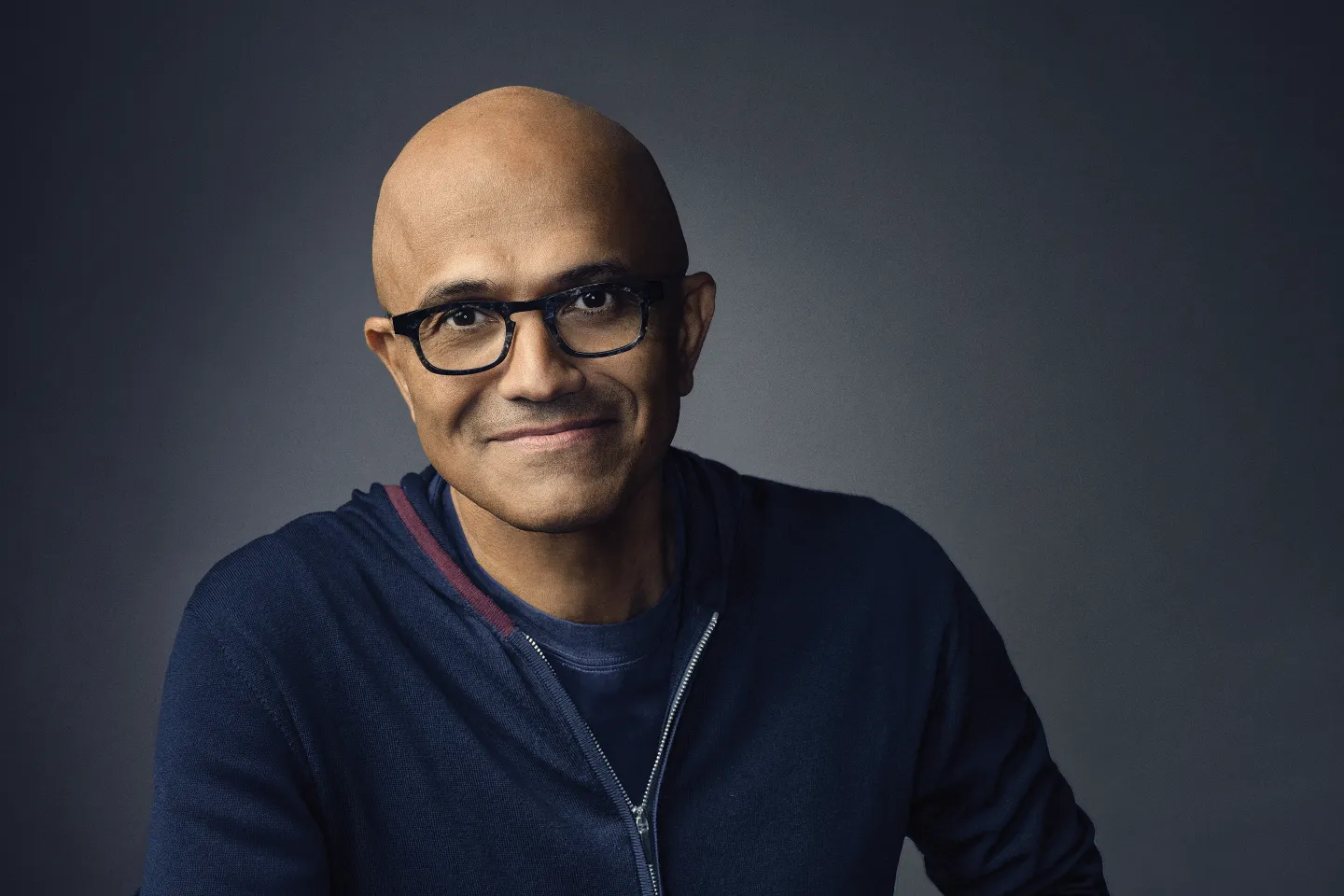
Born in 1967 in Hyderabad, India, Satya Nadella grew up surrounded by learning and service. His mother, a Sanskrit lecturer, instilled in him a love of language and culture, while his father, a senior civil servant, showed him the power of public duty and persistence.
Even as a young student, Satya was drawn not just to technology, but to the possibility it offered — the ability to change lives through innovation. After earning his degree in electrical engineering from the Manipal Institute of Technology, he left India to pursue higher studies in computer science at the University of Wisconsin–Milwaukee, and later completed an MBA at the University of Chicago Booth School of Business.
That blend of technical mastery and business acumen would one day define his leadership style: a rare fusion of intellect, empathy, and vision.
Rising Through Microsoft: The Power of Curiosity and Persistence
When Satya Nadella joined Microsoft in 1992, the company was already a global tech giant — but it was also a place where competition sometimes overshadowed collaboration. Satya didn’t enter as a disruptor, but as a learner. Over two decades, he worked across divisions, leading efforts in cloud computing, enterprise solutions, and online services.
His quiet curiosity and humility set him apart. Where others sought to prove they knew, Satya always wanted to learn.
By the time he was appointed CEO in 2014, Microsoft was facing stagnation — powerful, yet struggling to reinvent itself in a mobile and cloud-first world. Many saw the company as rigid, inward-looking, and past its peak.
Satya Nadella saw something different: a sleeping giant ready to rediscover its soul.
Rewriting Microsoft’s DNA: From Know-It-All to Learn-It-All
One of Satya Nadella’s first and most impactful moves was not a product launch, but a cultural reset. He challenged the internal mindset that had long defined Microsoft — what he called the “know-it-all” culture — and replaced it with a “learn-it-all” philosophy.
“Our industry does not respect tradition. It only respects innovation.”
— Satya Nadella
This wasn’t just a slogan; it became a way of life. Satya Nadella encouraged employees to stay curious, to collaborate across divisions, and to embrace failure as a step toward growth.
He introduced empathy as a core leadership value — something rarely discussed in Silicon Valley boardrooms. For Nadella, empathy wasn’t a soft skill; it was a strategic advantage. It shaped how Microsoft designed products, how teams communicated, and how the company saw its role in the world.
A New Vision: Empowering Every Person and Organization
Under his leadership, Microsoft’s mission evolved into something beautifully simple and deeply human:
“To empower every person and every organization on the planet to achieve more.”
This vision reflected not only a corporate strategy but a philosophy of inclusiveness and purpose.
Satya Nadella repositioned Microsoft as a platform company focused on enabling others — whether through cloud technology, artificial intelligence, or open-source collaboration.
The results were transformative:
- Microsoft Azure became a global leader in cloud computing.
- The company made strategic acquisitions, including LinkedIn, GitHub, and Activision Blizzard, expanding its ecosystem far beyond Windows and Office.
- Microsoft’s market value soared from around $300 billion in 2014 to over $3 trillion by 2024.
But perhaps most importantly, Microsoft regained something priceless — relevance.
Leading with Heart: Personal Lessons that Shaped a Global Leader
Satya’s leadership philosophy is deeply personal. He often speaks about how raising a son with cerebral palsy changed his outlook on life, empathy, and leadership. It taught him patience, humility, and the ability to see the world through another’s eyes.
That experience profoundly influenced how Microsoft approached accessibility and inclusive design — not as compliance, but as compassion in action.
Satya also models vulnerability and humility. When he made a misstep early in his CEO tenure by suggesting women should rely on “karma” rather than ask for raises, he didn’t deflect or defend. He apologized publicly, admitted he was wrong, and used it as a learning moment.
In doing so, he showed that leadership is not about perfection — it’s about growth, accountability, and grace.
The Transformation of Microsoft — and Modern Leadership
Satya Nadella didn’t just turn Microsoft around; he redefined what leadership in the 21st century looks like.
He showed that empathy and performance are not opposites — they are partners. That curiosity and humility can drive more innovation than ego ever could.
Under his guidance, Microsoft became more open (joining the Linux Foundation, once its rival), more collaborative, and more focused on global challenges like sustainability, digital inclusion, and ethical AI.
In a world often obsessed with speed and disruption, Satya Nadella brought something rare — depth and humanity.
Lessons for Every Leader
- Lead with empathy, not ego.
True strength comes from understanding others, not overpowering them. - Foster a learning culture.
Success isn’t about knowing everything — it’s about staying curious and adaptable. - Define purpose beyond profit.
Empowerment, inclusivity, and sustainability are the cornerstones of long-term impact. - Admit mistakes and grow from them.
Vulnerability builds trust; trust builds teams. - See technology as a force for good.
Leadership is about expanding what’s possible — not just for shareholders, but for society.
The Legacy of a Modern Visionary
Satya Nadella’s story is a testament to what happens when leadership evolves from authority to authenticity. He didn’t just save Microsoft’s business; he reignited its soul.
In doing so, he reminded us that in times of rapid change and uncertainty, the most inspiring leaders are those who combine vision with empathy, strategy with soul, and ambition with humanity.


